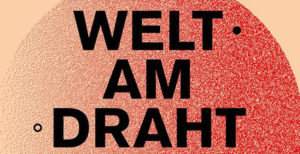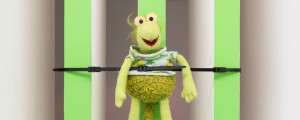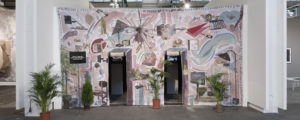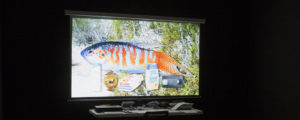It’s easy to spot the Gallery Weekenders —they’re dressed mainly in black, brandishing the programme’s teal coloured fold-out map and trapped anxiously in the car park of a residential block because the space they seek, but can’t find, is actually a floor above them through a small unmarked door to the left. It’s a great way to meet people.
This year’s edition of Gallery Weekend Berlin, running April 29 to May 1, includes an impressive 54 official galleries, 17 private collections and museums, and a stream of satellite programmes spanning installation, intervention, performance and exhibitions across the city. Thank goodness the map also highlights partner gastro centric businesses to keep our energy levels up throughout the weekend.
First stop on AQNB weekend is Potsdammer Strasse where Arratia, Beer invites you on a journey of self exploration with British artist Ed Fornieles and his exhibition Der Geist: Flesh Feast. The artist is protagonist in the film of the same name, present in the shape of his recurrent animated fox avatar. We sit on low orange plastic lounge chairs and listen to a woman’s voice tell us how to successfully create ourselves, while images move across the screen like flashes of memory or components of personality. The fox (artist) cuts in after a few minutes to talk about coping with life and the spiritual routine he is trying out. Fornieles calls it his diet —controlling input to control output —and discusses food consumption and processing. It’s part of the revival of spiritual manifestation and empowerment —or Harvard Business Review —but it is his website which offers the most insight into the project. The film was a highlight, but other works include small 3D-printed models of the fox in various corporate/ every-day environments with banal affirmations emblazoned on the base and illuminated in glass cabinets, plus ‘Last Days in the Desert’, a large food cart full of fresh vegetables laid out into playful humanoid shapes.
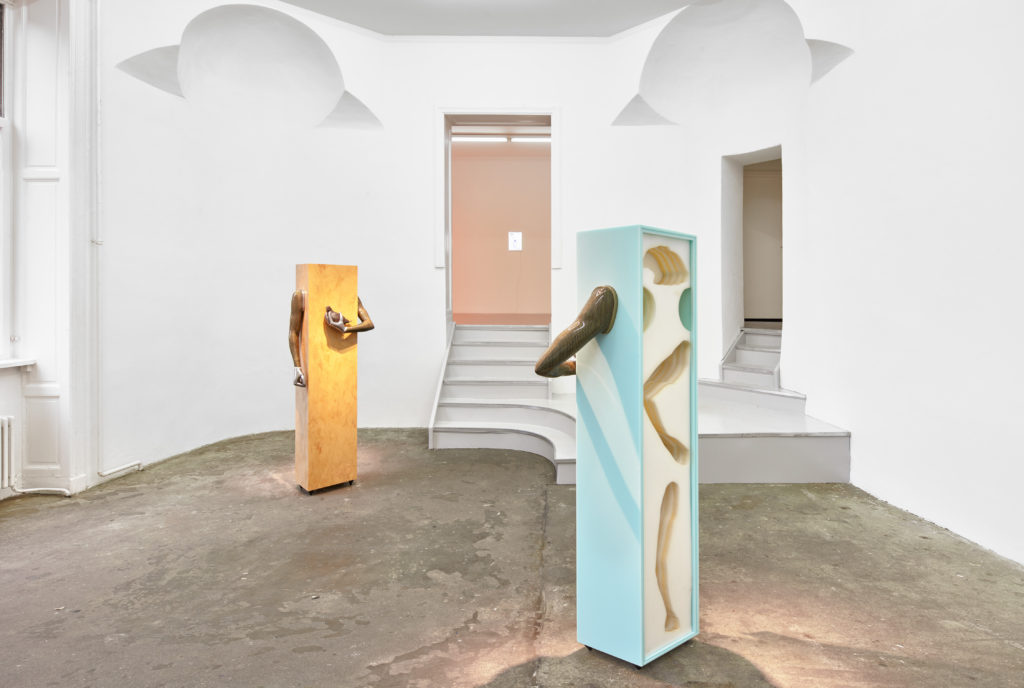
Around the corner at Tanya Leighton ‘Buri’ and ‘Spotigy’, two bulls, stare back at us from two-meter tall chromogenic prints in Aleksandra Domanović’s installation. These documentary photos were taken on site at the University of California, Davis, where two bulls have been genetically modified to remove their horns using CRISPR technology. The most interesting part of the show is the accompanying interview with animal geneticist Alison L. Van Eenennaam. In the text we learn more about the genetic tools used to manipulate DNA and the extensive research currently happening there. The artist also tells us that part of her interest in the project is due to the main scientists on the project being female. The Votive series of three sculptures are human height cuboid structures made from variations on PA plastic, foam and polyurethane. The structures have protruding human arms, which cradle an animal.
Micky Schubert gallery on Genthiner Strasse offer a sensual selection of works by Berlin-based artist Ketuta Alexi-Meskhishvili. I’m drawn instantly to the abstracted neon hues and layered pastels in the photographer’s images which keep my attention with occasional recognisable forms: a leg here, an iPhone there. Working at the intersection of digital and analogue, Alexi-Meskhishvili creates a world of suggestion and mystery, almost to abstraction, alluding to a deeper narrative with the figurative and personal interactions with objects. Her works are constructed with painterly attention to surface and process whether using a found image, or staged photographs, and the colour saturation is reflective of the oversaturated climate.
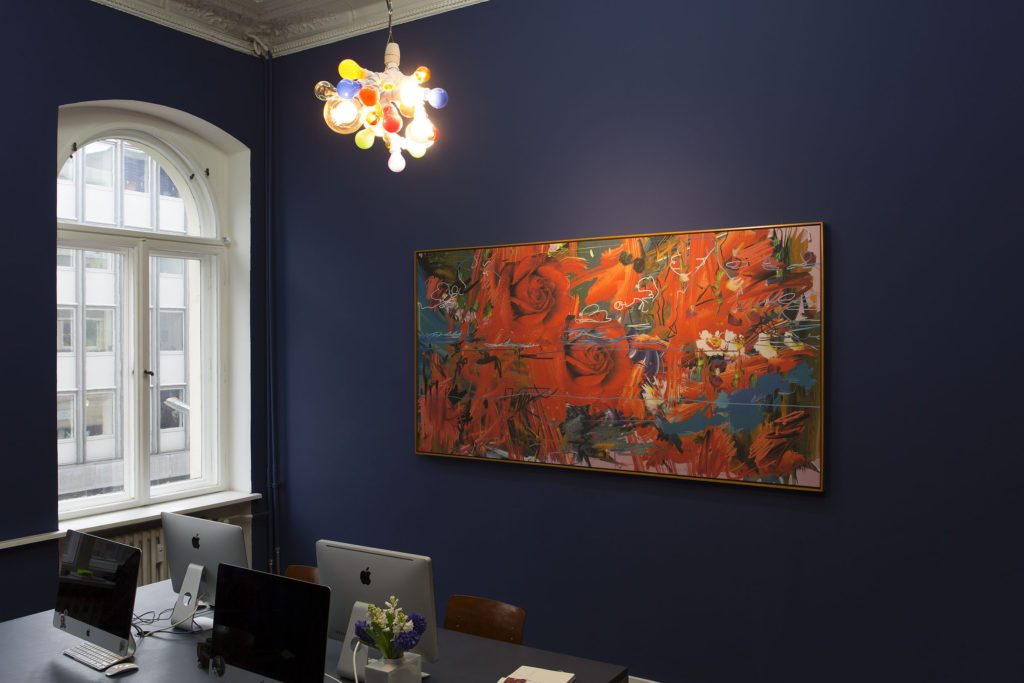
Upstairs Société present LA-based artist Petra Cortright with her deconstructive/reconstructive installation die Rose. The show includes two recent examples of her ongoing webcam collaboration with Stella McCartney, in which the artist wears the fashion designer’s items as the video is filtered through distortion software. Sporting a floral handbag, Cortright moves around the screen to switch on the process, first imitating a pictorial slider game, and then pulsing in linear waves to a background of loud electronic music. Her digital paintings and printed flags, all constructed from the same PhotoShop file, stand strong in another room, depicting abstracted floral layered surfaces, created using various in-built and self made PhotoShop brushes.
Stepping in to Alice Channer’s installation at Konrad Fischer Gallery there’s a warning that one does so at their own risk; the polished concrete gallery floor is covered in an inch-thick layer of tiny black plastic pellets! My smooth-soled brothel creepers are highly inappropriate for this endeavour, however as I awkwardly glide over to the table to collect the exhibition text, it says that the pellets are Polyester Regrind, continuing the artist’s interest in materials, matter, and waste product. And the audience loves it. Elongated rock formations, ‘Burial’, float in the sea of black plastic, cast from aluminium bronze, concrete and corten steel, which are formed in layers resembling topographical survey maps. There is a feeling of movement, and flow, an alchemy and history of material that connects all of Channer’s works. Her more delicate circular molecular drawings in gouache hang at varying heights in both the upstairs and downstairs gallery, with names like ‘Filter’, ‘Inhaler’, and ‘Membrane’. The gouache is mixed with Silk Cut cigarette ash.
This selection of work from GWB is very process-driven, with artists shifting between producer and consumer in a sometimes playful and engaging way. My only wonder is when an artist points at something, where does the audience live in relation to the work — are we participating in something, or are we observing a show and tell?**
Gallery Weekend Berlin was on in venues across the German city, running April 29 to May 1, 2016.
Header image: Aleksandra Domanović, Bulls Without Horns (2016). Courtesy Tanya Leighton, Berlin.
